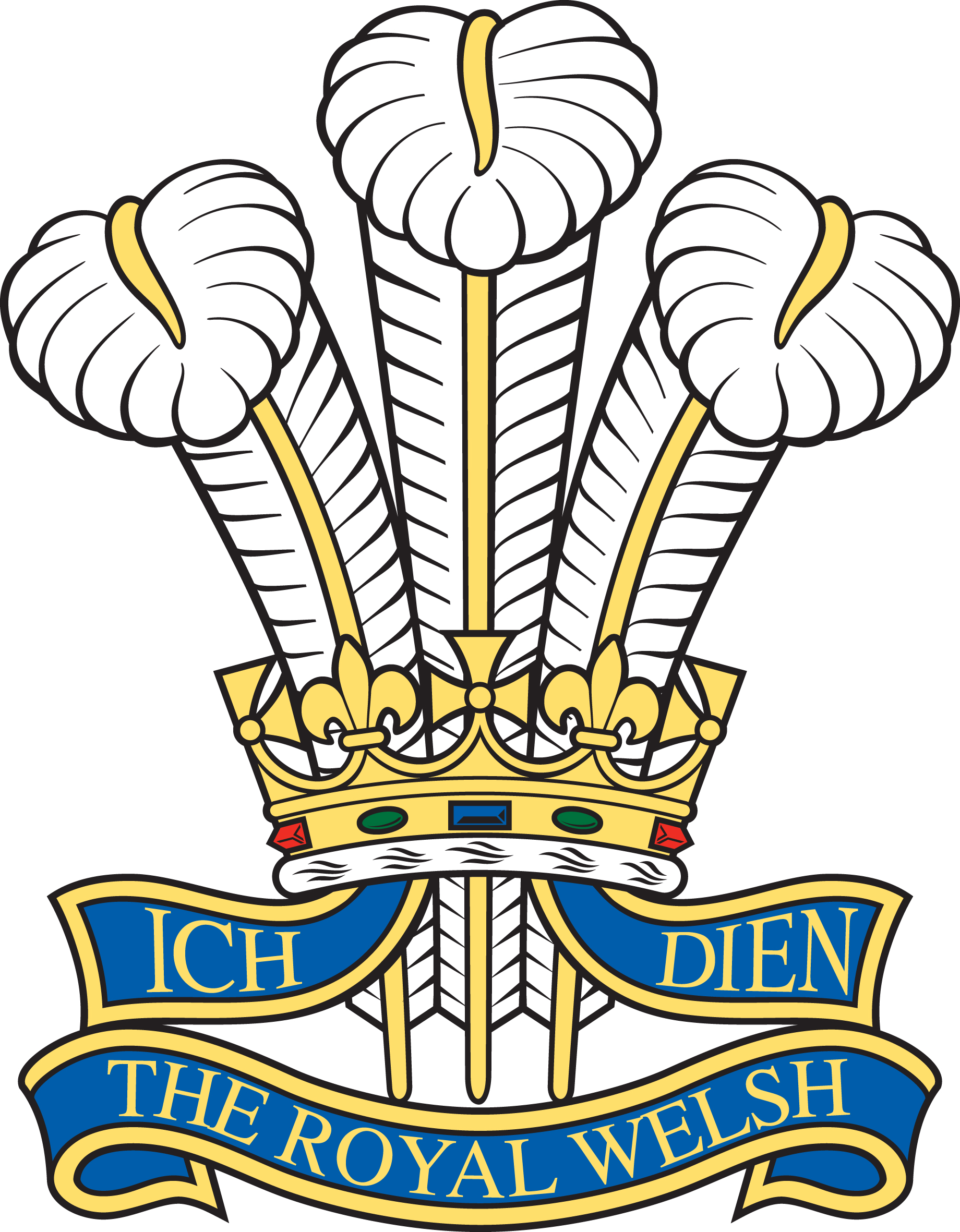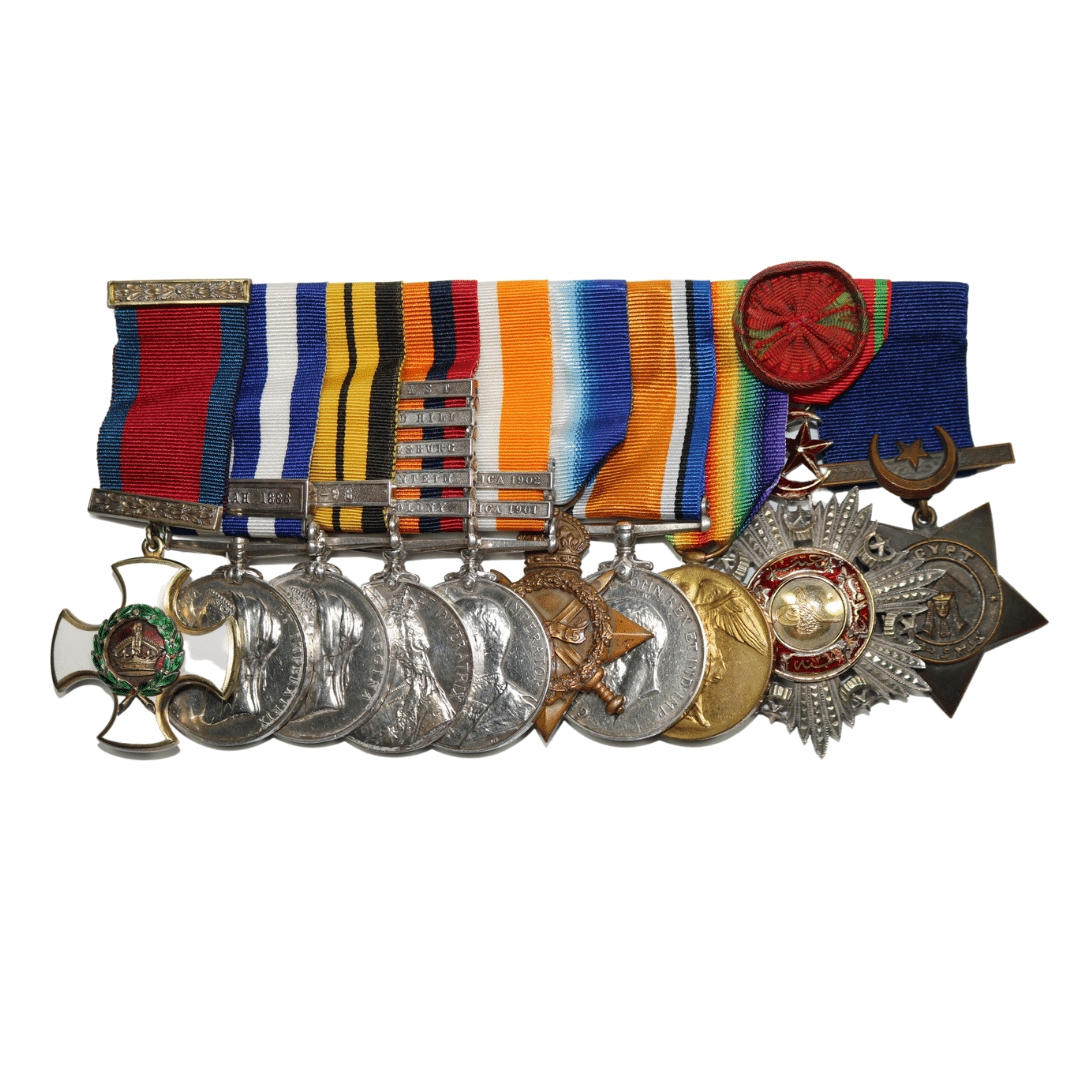The landscape paintings made by Terry Frost are unlike any other representation of nature. A…

Collection Close-up: Lieutenant Colonel William Carter Giffard
Lt Col William Carter Giffard was born in 1859 to Major Edward Giffard and Lilian Lowndes and was educated at Winchester College. He spent a year at Sandhurst before commissioning in the 41st (the Welch) Regiment of Foot in 1878.
During his military career, Lt Col Giffard served all over the world, including Gibraltar (1880), South Africa (1881-86), Egypt (1886-89), Malta (1891-93) and the Gold Coast (1897-99). He also fought in both the Boer War and in World War One.
Wherever he was in the world, he kept in touch with his family at home, writing regularly to his mother, until her death in 1900, and to his daughter from the trenches in France. He was also a keen photographer, and amassed a huge collection of pictures from his travels, the images, ranging from theatres of war and hunting expeditions, to wild animals, plants and even pets, were all taken on his pocket camera.
Lt Col Giffard, like most officers of his time, enjoyed hunting and riding, but he was also a serious naturalist and sent many samples of animals, birds and butterflies collected on his travels to the Natural History Museum in London.

Lt Col Giffard’s Military Career
Africa
In 1880 Giffard was posted with his regiment to Gibraltar, and from there travelled to South Africa. While stationed in South Africa, the 41st regiment became the 1st Battalion, The Welch Regiment (1881), and was involved in operations in Zululand.

By this time, the Anglo-Zulu War was over but, in letters home Giffard mentions King Cetshwayo sending thanks to his Regiment for their help in deterring the Boers. He was clearly not taken by the King, writing: “I should like much to get a shot at the old hypocrite”.
While in Africa, Giffard, along with other officers, made the most of the opportunities to go hunting. On one particular expedition the regiment’s commanding officer, Colonel Montgomery, was bitten by a snake, and later died. Giffard wrote:
“My dear mother, we are all much shocked to hear of Colonel Montgomery’s death this morning. He got a snake bite while shooting yesterday but did not see what sort it was; Reade was with him and offered to lance and suck the place, but being quite near camp he rode in, meeting one of the doctors on the way who did all that was right without loss of time. When we went to bed the doctors said he was getting on very well … he died at two. Ten hours from the time of the bite.”
Egypt
In 1886, Giffard’s regiment was sent to Egypt. Revolutionary nationalists were threatening the Khedive Government (established with British and French assistance in 1882), and Britain’s main concern was to protect the canal route to India from any risk posed by a hostile government in Cairo.
In 1888, fighting broke out between British-commanded Egyptian forces and revolutionaries led by Osnam Digna. Giffard, now a captain, was involved in the action of 20th June 1888 at Gemaizah, where the Welch gave covering fire to the advancing Egyptain troops. Giffard was mentioned in Despatches for his part in the battle.
He wrote to his mother with an account of the action:
“We went out before light on the 20th and faced the trenches about 800 yards off while the artillery played on them and the bush. The black brigade my old friends came down the trenches from our right and turned the enemy out. We had some pretty shooting then and a little later. I worked two companies round our left and got in some volleys at 700 yards which accounted for a lot. They stopped once and looked like charging us but went on, not running but jogging along in a sullen sort of way under a hail of bullets.”
Between 1889 and 1893 the 1st Battalion, the Welch Regiment was based in Malta, from there Giffard travelled extensively, visiting Tunisia, Greece, Egypt and Sicily, as well as spending time in Britain on leave. On one trip in 1892, he managed to capture Mount Etna erupting with his trusty pocket camera.
The Gold Coast, Africa
From November 1897 to May 1899 Giffard was on special service in Africa while Britain and France sought to occupy territory along the Gold Coast. Giffard was stationed at Gambaga, not far from the present-day borders of Burkina Faso and Togo. He was tasked with keeping track of French activities in the area, while at the same time establishing good relations with local tribes and subduing those that were hostile.
While the French were the British Government’s main concern, Giffard and the men serving under him, were at far greater risk from being ambushed by local tribes. They suffered many casualties, including some from poisoned arrows.

On March 17th, 1898, Giffard led an expedition to the small town of Karaga, south of Gambaga. As he and his men approached the town enemy scouts ambushed them. They were engaged in fighting for two days and Giffard lost nineteen men. He was slightly injured himself and his rifle got a bullet hole through the barrel. Once again, Giffard was mentioned in Despatches for his part in the action, and was promoted to Major.
The Boer War
On his arrival back in Britain in May 1899, Giffard was promoted again, this time to Brevet Lieutenant Colonel, and in November was sent, as second-in-command of the Welch Regiment, back to South Africa.
The Boer War had begun in October 1899, but was not going well. The British had been defeated in a number of major engagements including in the key towns of Ladysmith, Mafeking and Kimberley.
In January 1900, Lt Col Giffard wrote home saying: “I am worked to death just now. Barely time for meals…” He was arranging patrols, answering wires “every half hour”, making arrests, meeting troop trains and, at short notice, had been transferred to take command of the mounted corps.
The Welch Regiment were heavily engaged in fighting at Paardeberg and suffered serious losses. Colonel Banfield, the commanding officer, was wounded, so Giffard was transferred back to his regiment to take command until Banfield recovered.
Conditions were very hard, food was scarce, illness rife and the heat intense. Giffard wrote to his mother: “…I am still alive and actually better than a week ago now that I am not in the saddle from morning to night… Heat and dust and flies… water bad, all farmers rebels, few comforts, no luxuries. The men always manage to get me some milk, I don’t ask how.”
During his time in command, the Welch were in the thick of the fighting and were responsible for the storming of Alexander Kopje at Driefontein. Giffard was praised for his coolness and courage in the battle, but was wounded.
His treatment in hospital involved the ‘blistering’ of his wounded ribs with mustard leaves. Giffard wrote: “… not to be beaten she (the sister) produced and applied the best and freshest mustard leaves…when they came away the skin came too.”
Giffard made a full recovery and re-joined his regiment as second-in-command. On March 15th 1900 they marched into Bloemfontein, much reduced in number. Giffard wrote on the back of a photograph of the regiment: “Only 10 officers left and about 220 men killed and wounded since Feb 20th.”
In April 1902 Lt Col Giffard returned to the UK. He was awarded the DSO for his service in the Boer War.

Retirment
Giffard was not in good health when he arrived home from Africa, and retired on half pay at the end of 1902. In 1907, aged 48, he married Cecil Schwabe and in 1909, the couple had a daughter, Diana. However, his retirement was cut short with the outbreak of war in 1914.

World War One
Giffard re-enlisted in the army as a brevet Lt Colonel and, in 1915, was given command of the 13th Battalion, the Welch Regiment in Neuve Chapelle, France. Despite the hardships of trench warfare, he managed to write home to his daughter, even enclosing a diagram of the trenches in 1916.
Once again, he was mentioned in Despatches and was promoted in the field, this time to brevet Colonel. However, his health was beginning to fail and he retired for the second time a few months before the end of the war.
He died three years later, aged 61.






































This Post Has 0 Comments